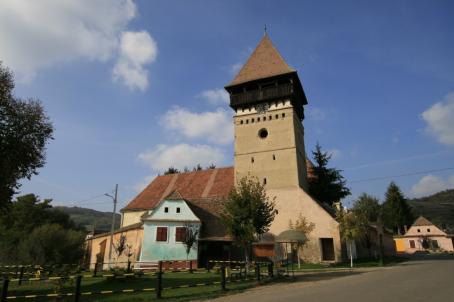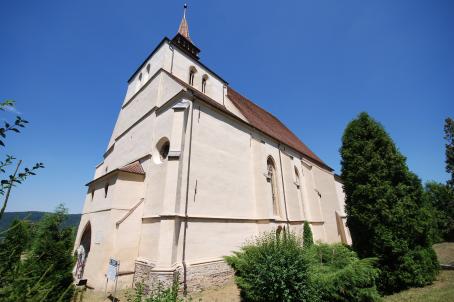Daneş Fortified Church

The small tower-less late Gothic church in Daneş was built in 1506. The tower was much later erected in 1927, as well as its defence levels, probably as a sign of self-assertion towards the 1918 new Romanian state and as a symbol for the 800 years of Saxon history in Transylvania. From the original defence wall only a few remains on the south side and a gate tower with a small watchtower are still preserved. The inner furniture dates back to different time periods: the baptismal font and the pulpit are Baroque, the altar is from 1878 and the organ from 1920. The vault covering the church’s hall was built in 1868.
About this building
For more information visit on this building visit https://kirchenburgen.org/en/location/dunesdorf-danes/





